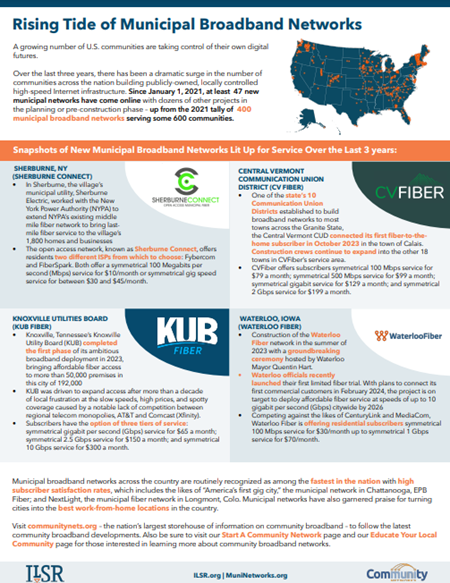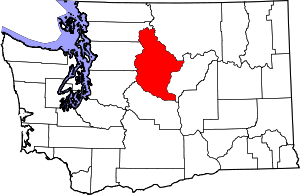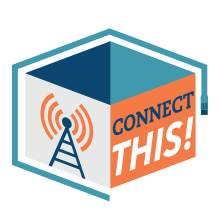
Fast, affordable Internet access for all.

As the municipal broadband movement continues to gain momentum, we created a new fact sheet to highlight the dramatic surge in the number of communities building publicly-owned, locally controlled high-speed Internet infrastructure over the last three years.
In January, we announced our updated tally of municipal broadband networks across the U.S., which showed that between January 2021 and January 2024 at least 47 new municipal networks had been lit up for service.
Our census of new municipal broadband networks comes while dozens of other projects are still in the planning or pre-construction phase, which includes the possibility of building 40 new municipal networks in California alone.
The new fact sheet not only contains pertinent numbers to illustrate the rising tide of municipal broadband networks, it also includes snapshots of four recently launched networks now providing service to communities hungry for high-quality Internet connectivity and competitive choice.
You can find the new Rising Tide of Municipal Broadband fact sheet here.

Community Broadband Resource Pairing
In January, we released our new census of municipal networks in the United States for 2024, and the significant growth that we've seen over the last two years as more and more cities commit to building Internet infrastructure to add new tools for their local government, incentivize new economic development, and improve connectivity for households.
The trend has not gone unnoticed by the monopoly players and their allies; we've seen new dark-money campaigns on both the East Coast and in the west, as astroturf campaigns and misinformation efforts have increased.
A new short documentary by Light Reading does a great job of outlining the stakes for local governments, residents stuck on poor connections, and the incumbents as the wave of municipal networks grows. Featuring the network in Loveland, Colorado and context by advocates like the American Association for Public Broadband (AAPB) Executive Director Gigi Sohn and Washington State Representative Drew Hansen, it's well worth watching.
Officials in Chelan County, Washington say they are making meaningful progress on its decades-old plan to deliver affordable broadband to all 79,000 county residents. After securing financing for its latest planned fiber expansion, the Chelan County Public Utility District (PUD) says it’s exploring options to help finish the job of equitable, affordable, full-county deployment.
Chelan County PUD was formed in 1936 by local voters frustrated by costly, spotty access to electricity. Like so many utilities, cooperatives, and communities, those rural electrification efforts have helped inform the quest for ubiquitous, affordable broadband access almost a century later.
In 2001, the Chelan PUD began building a county-wide wholesale fiber network at a time when PUDs in the state were restricted from offering retail telecommunications services. (Those state statutes were rolled back by state lawmakers in May 2021). The network currently covers roughly 81% of the county, reaching about 39,000 subscribers; 21,000 of which get broadband service through one of the county’s five local ISP partners.

An ongoing network expansion plan aims to extend the reach of the county’s fiber network to roughly 42,000 homes and businesses. Those efforts are currently being funded by some of the $14.9 million in American Rescue Plan Act (ARPA) funds received by the county, as well as the Chelan PUD's Public Power Benefit Program, financed by surplus wholesale power sales.

Join us Wednesday, November 15th at 2pm ET for the latest episode of the Connect This! Show. Co-hosts Christopher Mitchell (ILSR) and Travis Carter (USI Fiber) will be joined by regular guests Doug Dawson (CCG Consulting) and Kim McKinley (UTOPIA Fiber) to talk about the FCC’s digital discrimination docket, open access fiber in Canada, progress on community broadband in Chelan, Washington, and a couple bonus topics to boot.
Email us at broadband@communitynets.org with feedback and ideas for the show.
Subscribe to the show using this feed or find it on the Connect This! page, and watch on LinkedIn, on YouTube Live, on Facebook live, or below.
Public Utility Districts across the state of Washington have become key players in building out high-speed Internet infrastructure for residents and businesses in rural parts of the Evergreen State. One of those PUD’s, the Whatcom County Public Utility District (PUD) is now leading that charge in one of the most difficult-to-reach parts of the state, building an open access dark fiber network that will bring high-speed connectivity to over a thousand homes and businesses in Point Roberts.
Point Roberts is a pen-exclave of Washington State, about 25 miles south of Vancouver. (Pen-exclave: an area that can only be accessed through another country – in this case, Canada). The rural community, known for its peaceful beaches and mountain views, as well as its orca and eagle populations, is just under 5 square miles and home to about 1,200 residents.
Designated to the United States in 1846 as the border between the United States and Canada was drawn along the 49th parallel, Point Roberts has a distinct geographic identity, which presents a unique challenge when it comes to building broadband infrastructure.

This week on the podcast, Christopher is joined by Justin Holzgrove, Director of Engineering & Utility Services, and Mike Rientjes, Telecommunications Manager, both from Mason County Public Utility District 3 in Washington State. The PUD provides electric service to more than 35,000 households across an area the size of Rhode Island, and began connecting its grid infrastructure to fiber in the late 1990s. Since 2003, it has operated an open access ftth network for households; an endeavor that has sped up since 2015, when residents began clamoring for more.
Justin and Mike join to talk about how the PUD's efforts have been aided because of the fiberhood model they're using. Once enough households in a region register interest, the PUD's trucks roll into town. Interested homeowners then join those fiberhoods and pay a $25/month construction adder for a period of 12 years - no matter how long a drop their home requires.
The result? Strong word of mouth and indirect marketing have meant some of the highest take rates we've seen on community-owned networks, with an average of 80% across Mason PUD 3's existing service territory, and 100% in some areas. Demand is so strong that the PUD has been working overtime to keep up and deal with supply chain shortages on things like vaults to keep up with the demand.
Watch the video below for more on the history of PUD 3, and the one below that for how the PUD's fiberhood approach works.
This show is 28 minutes long and can be played on this page or via Apple Podcasts or the tool of your choice using this feed.
Transcript below.
We want your feedback and suggestions for the show-please e-mail us or leave a comment below.
Listen to other episodes here or view all episodes in our index. See other podcasts from the Institute for Local Self-Reliance here.
Thanks to Arne Huseby for the music. The song is Warm Duck Shuffle and is licensed under a Creative Commons Attribution (3.0) license.

This week on the podcast, Christopher is joined by Will O'Donnell, Broadband and Communications Director at Jefferson County Public Utility District in Washington State, to talk about the Herculean task facing the PUD: how to deploy an open access fiber network to the utility's 21,000 meters in some of the least-dense parts of the state.
It's a project that will likely cost more than $200 million, but Jefferson County PUD is getting started now. It's using $50 million to reach the first 4,000 households over the next few years, covering miles of coastline and forest from the Hood Canal and Dabob Bay across the peninsula to the Pacific Ocean. Will shares how the combination of federal and state funding, as well as recent legislative changes freeing the PUDs up to offer retail broadband service, turned around local leadership since a 2019 study that showed intractable barriers to success. Now, Jefferson County is moving full-steam ahead. Construction begins later this year, and the PUD plans to operate as an Internet Service Provider (ISP) on the network alongside others. The secret sauce to keeping costs down and being successful? Using tried-and-true, conservative deployment models (at least at first), and a retail plan with managed Wi-Fi at its core to keep costs low and truck rolls to a minimum.
Residents are already clamoring for the service.
This show is 25 minutes long and can be played on this page or via Apple Podcasts or the tool of your choice using this feed.
Transcript below.
We want your feedback and suggestions for the show-please e-mail us or leave a comment below.
Listen to other episodes here or view all episodes in our index. See other podcasts from the Institute for Local Self-Reliance here.
Thanks to Arne Huseby for the music. The song is Warm Duck Shuffle and is licensed under a Creative Commons Attribution (3.0) license.

Kitsap Public Utility District (KPUD) provides water, wastewater, and Internet service on Bainbridge Island and the neighboring peninsula in the Puget Sound in Washington state. It began building an open access fiber-to-the-home (FTTH) network in 2016 to address decades of poor DSL service as the only option offered by the private marketplace. Today, the Kitsap fiber network has grown to 500 route-miles and offers service to more than 1,600 premises via almost a dozen ISPs with the help of a growing team.
This week on the podcast, Christopher is joined by three members of that team: Allison Cotner (Telecom, Business, and Projects Manager), Stephanie Hall (Telecom, Business Development, and Community Relations Specialist), and Thomas Schreyer (Network Engineer). They share the building momentum in Kitsap County, driven by ever-increasing demand by residents and businesses for the publicly owned fiber network.
Christopher learns more Kitsap's innovation in using Local Utility Districts to drive expansion, which allows small groups of homes to petition KPUD to extend its network to their neighborhood. More than 50 have formed so far. He also hears about the flexible financing mechanisms the PUD and local government have created for households to foster expansion, and how happy residents are to see trucks in the area. Increased revenue has driven more investment in infrastructure to reach new households and new LUDs, which has meant more and more work for Stephanie and Thomas as they continue to build relationships with the local chamber of commerce and make sure that the network can sustain that growth far into the future.
Watch the video below to learn more about the expanding KPUD Fiber.
This show is 29 minutes long and can be played on this page or via Apple Podcasts or the tool of your choice using this feed.
Transcript below.
We want your feedback and suggestions for the show-please e-mail us or leave a comment below.
Listen to other episodes here or view all episodes in our index. See other podcasts from the Institute for Local Self-Reliance here.
Thanks to Arne Huseby for the music. The song is Warm Duck Shuffle and is licensed under a Creative Commons Attribution (3.0) license.

Join us Thursday, June 22nd at 2pm ET for the latest episode of the Connect This! Show. Co-hosts Christopher Mitchell (ILSR) and regular guest Doug Dawson (CCG Consulting) will be joined by Drew Clark (Broadband Breakfast) and Angela Bennink (Kitsap PUD) to talk about all the recent broadband news that's fit to print. Stay tuned for more!
Email us at broadband@communitynets.org with feedback and ideas for the show.
Subscribe to the show using this feed or find it on the Connect This! page, and watch on LinkedIn, on YouTube Live, on Facebook live, or below.
The Port Of Whitman County is one of several rural Washington communities set to nab another major infusion of broadband grants courtesy of federal Covid disaster relief. A fresh infusion of $1.1 million announced last week will help the County expand a five city (Palouse, Garfield, Oakesdale, Tekoa and Rosalia) fiber expansion project to 104 unserved homes.
In partnership with Ziply Fiber, the Port will bring fiber connectivity to those homes that were not included in the first phase of the project. According to city officials, construction will begin in the fall 2023 and be complete by spring 2024.

It’s part of a broader $121 million in new broadband grant awards doled out by the Washington State Broadband Office to expand access to affordable broadband service across traditionally underserved portions of the state. All told, the new awards will be used to fund more than 19 different projects, bringing improved broadband access to nearly 15,000 state residents.
“These grants will provide initial service availability to 14,794 end users located across the state, in communities as diverse as the San Juan Islands, Kittitas County and the Spokane reservation,” Washington Broadband Office Director Mark Vasconi said of the latest round of funding.